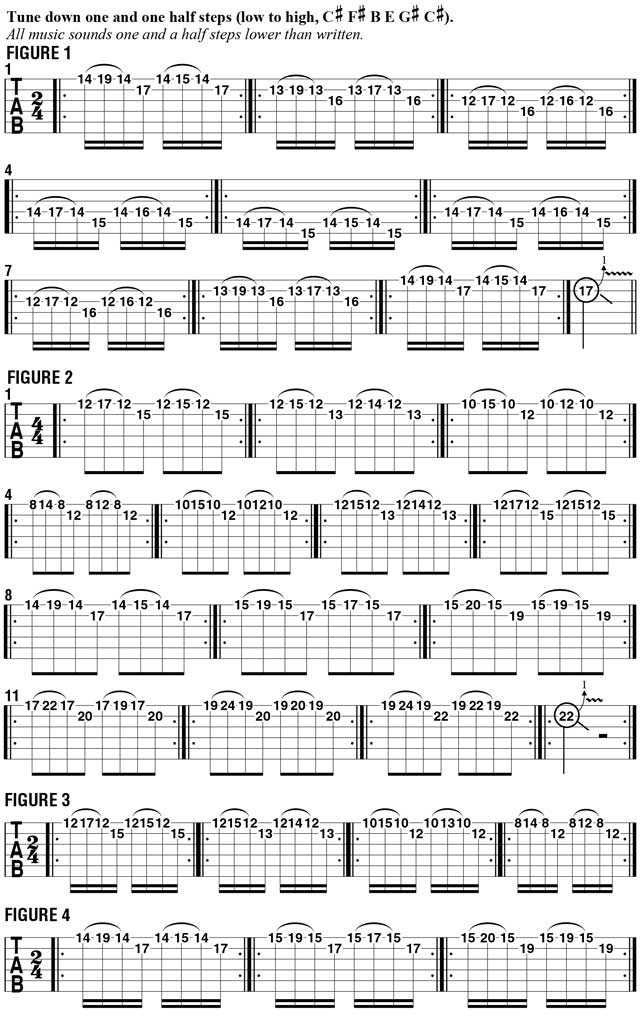Combining Pentatonic Scales to Create Unexpected Phrases
Combine the minor pentatonic and Hirajoshi scales to create melodic lines that offer more harmonic-melodic variety.

The word pentatonic is derived from the Greek penta, meaning five, and tonic, meaning tone. So, as its name implies, a pentatonic scale is any scale built from five tones.
The most commonly used pentatonic scales are minor and major pentatonic. Minor pentatonic is intervallically spelled 1 b3 4 5 b7, and major pentatonic is spelled 1 2 3 5 6. As I mentioned last month, I refer to the standard minor pentatonic scale as “western pentatonic,” and there are unusual, interesting variants of it, such the Japanese Hirajoshi scale, which is intervallically spelled 1 2 b3 5 b6.
This scale, which I refer to as “eastern pentatonic,” has a very dark, exotic quality, which makes it well suited for metal.
In our previous two lessons, I demonstrated two different approaches to building repeating four-note lead phrases based on pentatonic scales. As you recall, the first is based on moving up and down the fretboard on a select group of strings, and the other has you remaining in a single position and moving across all six strings. We began our investigation with some wide-stretch fretboard patterns based on minor pentatonic and then expanded this approach to include the Hirajoshi scale. This month, we’re going to combine the two scales in order to create melodic lines that are less predictable and offer more harmonic-melodic variety.
First, let me demonstrate the Hirajoshi scale, as played in 12th/14th position, using similar four-note patterns. As shown in bar 1 of FIGURE 1, I use a wide fret-hand stretch to perform a quick hammer/pull between the 14th and 19th frets on the high E string; the stretch is wider still in bar 2, as I reach from the B string’s 13th fret up to the 19th fret for a similar hammer/pull. When performing wide stretches like these, I keep my fret-hand fingers arched over the board, with the thumb placed on the lower area of the back of the neck, which will afford the greatest span and reach with the fretting fingers. In each repeating pattern, the initial string is picked once with a downstroke, and following the hammer/pull, the lower string is picked once, also with a downstroke.
In FIGURE 3, the phrases are played twice as fast, in a rhythm of 16th notes, so strive for clean execution and accuracy in all of the hammer/pulls and shifts up and down the fretboard.

All the latest guitar news, interviews, lessons, reviews, deals and more, direct to your inbox!
